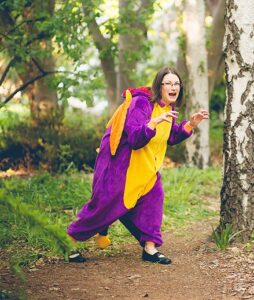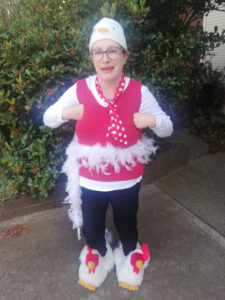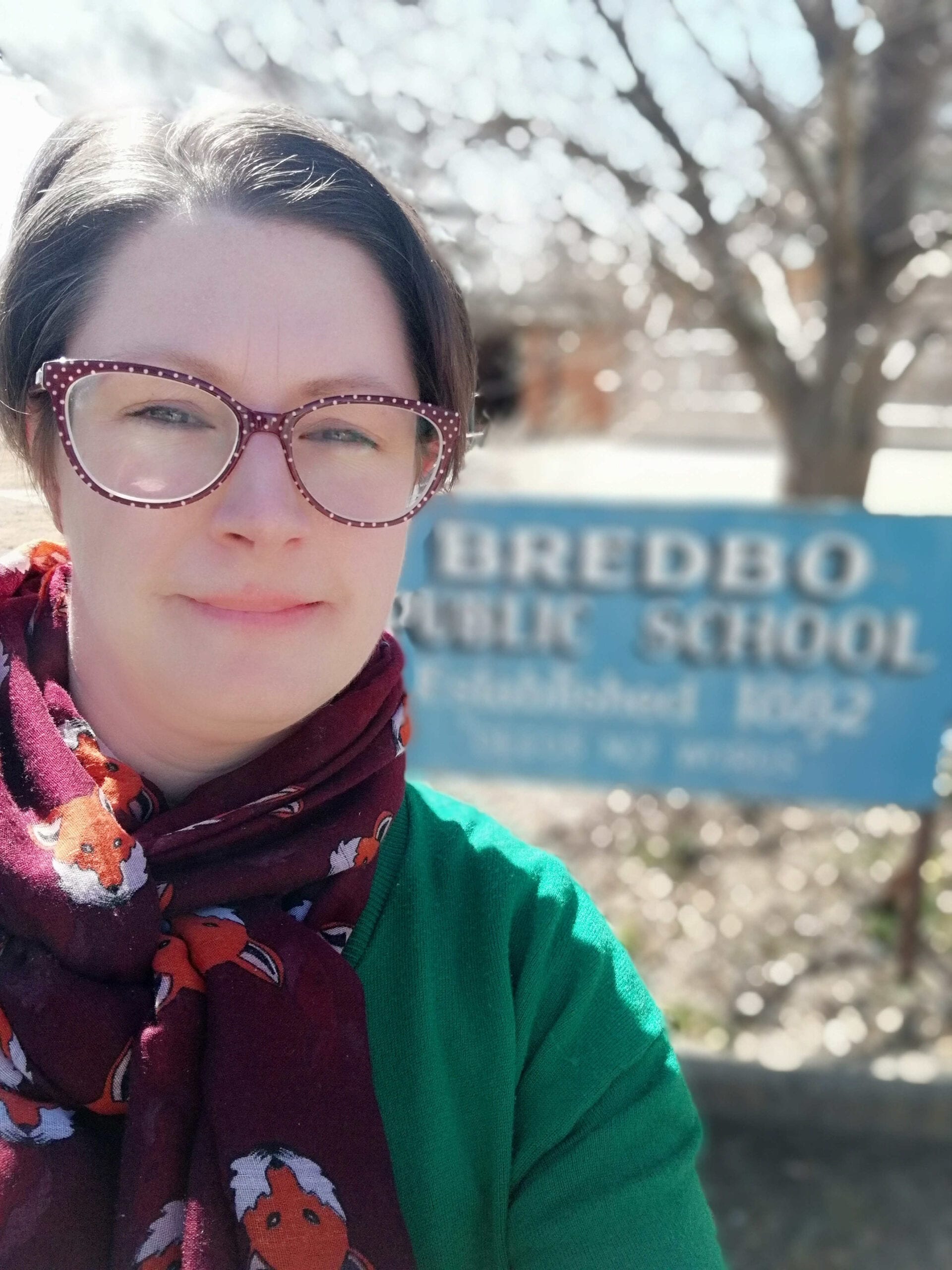Storytelling is so much more than sitting and reading a book aloud. In fact, Holly Bidwell does not read from books during her sessions. Instead, she uses props like costumes, puppets and felt boards, along with the power and magic of words to bring each story to life. Holly is a Canberra-based accredited storyteller with the ACT Storytellers Guild and is available for school visits and other community events. Not only that, but this talented lady also writes her own wonderful stories.
Find out what inspires Holly Bidwell when she’s telling stories AND where she gets ideas for her own writing – double the value from one set of questions.

Where do you get your inspiration and your ideas for your writing and storytelling?
For my storytelling, I read through collections of folktales from around the world that might be fun to perform or I might find a way to adapt a picture book I enjoy. Sometimes I have a theme in mind and might go looking for a story about bears or winter.
Many authors are inspired by folktales too. I once read a Chinese folktale about a tiger who wants to eat a fox for his dinner but is outwitted when the fox convinces him he has special powers. It reminded me of The Gruffalo. I later found out that Julia Donaldson was inspired to write The Gruffalo by that very same folktale.
Do you have any tips for students who might be struggling with the blank page?
I love to find a picture or an item that intrigues me, then I sit down to write. I set a timer (ten or twenty minutes) and I write whatever comes into my brain. Whether it’s good or not doesn’t matter, I just get as many words as I can down on paper. The more I write, the easier it gets. Once I’m writing, more ideas start to flow.
Your first sentence might even be, ‘I don’t know what to write!’
A couple of years ago, I wanted to make some gingerbread-scented playdough to use in storytelling but I didn’t know what to do with it. So I made the dough and sat down with it, breathed in the lovely gingerbread scent and began to write. A little while later, I had a story about Santa, Mrs Claus and some magical gingerbread dough.
Of the stories you tell, which is your absolute favourite? Why?
I love the story of The Big Old Fashioned Bed. It’s about a little boy who goes to stay with his grandma. He has trouble sleeping and his grandma lets him have her farm animals for company. Eventually, he ends up with all the animals in bed with him.
As the story goes on, I encourage the audience to join in making animal sounds. I love telling stories myself, but I really love it when the audience joins in. It’s wonderful to hear a roomful of kids making cat, dog, goat, cow and horse noises together. It’s even better when the grown-ups join in too.
Which character from your storytelling repertoire is your favourite? Why?
I love Baobab (or Boab) tree. It’s a story I tell with a beautiful tree puppet. The tree does nothing but complain and whinge that it’s not as big or beautiful as the other trees in the world.
When I tell the story, I get to BE the Baobab and act as silly as I want. There’s lots of screaming and whining. I love being silly. The sillier I am, the more kids laugh. The more kids laugh, the sillier I get. That makes me very happy indeed.

When you think about children hearing you tell stories, how does this make you feel? What do you want their ‘take-aways’ to be?
When I arrive to tell stories to children who haven’t heard a storyteller before, they expect me to have a pile of books. They often don’t realise that storytelling is an ancient art form that existed long before books did. I love to see their faces light up when they see what oral storytelling can be.
If a child in the audience learns something about another country or culture, that’s wonderful too. They might learn how to say ‘hello’ in Spanish, or that in China, Kings are called Emperors. They might learn the name of a country they’d never heard of before.
I also want kids to be able to relax and enjoy a story for the sake of enjoying it.
Finally, we asked for any tips for teachers who’d like to include ‘storytelling’ in the oral component of their lessons. Here are three brilliant tips from Holly Bidwell:
1) Choose stories that are familiar, or have lots of repetition. The patterns in short stories are much easier to learn than long, complicated epics. A well known fairy tale is a good start, you can embellish the story as you go and grow in confidence. Try asking students to tell each other Goldilocks and the Three Bears. Most children will be familiar with it and there’s plenty of room for fun and silliness
2) Once you’re comfortable with a story, don’t be afraid to use your voice. Be loud when your story needs to be angry, silly or big and draw your audience in with a whisper when the story is gentle or quiet or when you need to create tension.
3) Don’t be afraid to use movement. You’re not tied to holding a book and sitting in a chair when you’re telling oral stories. You can run around the room, roll on the floor and jump up and down. It will bring your story to life and help connect with your audience and is a great chance for kids to get up out of their seats when it’s their turn to ‘tell’.
Stories are so much fun.
To find out more about storytelling sessions with Holly Bidwell, check out her website (and make sure you look at her blog too – lots of information and inspiration there). Holly can also be found on Facebook and Instagram.
If you’re looking for more ideas to inspire a love of writing in your students, and how to fire up your writing lessons and get your students engaged with books,contact Kellie and book her for a small group, whole class or teacher mentoring session.
